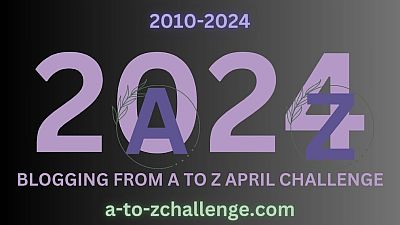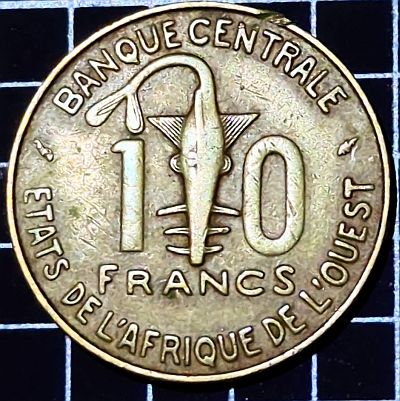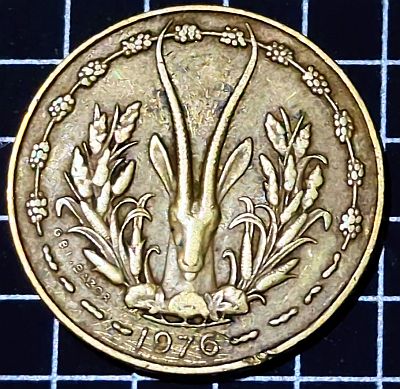This is my entry for Day 23 “W” of the Blogging from A-Z April Challenge!
W = West African States.

West African Monetary Union
The European Union oversees a single currency, the Euro, which is used across most countries in Europe. This is known as a “Monetary union”. There have been other Monetary Unions, back to at least the 19th Century. Most simply, a monetary union or a currency union is where two or more countries agree to use a common currency.
The West African Monetary Union (WAMU) oversees a single currency for eight countries in the west of Africa. At the time of its founding on May 12, 1962, its membership comprised the Republics of:
- Côte d’Ivoire (Ivory Coast)
- Dahomey (now Benin)
- Mali
- Niger
- Mauritania
- Senegal
- Togo
- Upper Volta (now Burkina Faso).
Since then, Mauritania has left, and Guinea-Bissau has joined.
The Central Bank of West African States (BCEAO) is an international public institution with headquarters in Dakar, Senegal. The bank’s main function is the distribution of currency throughout the monetary union. The currency of the union is called the CFA Franc. CFA stands for “Communauté financière d’Afrique“, French for “African Financial Community”, although it has had various meanings.
The CFA franc was created on December 26, 1945, the date on which France ratified the Bretton Woods Agreements and made its first declaration of parity to the International Monetary Fund (IMF). At the time, the name meant “franc of the French Colonies of Africa”.
It was later known as the “franc of the African Financial Community” to the member States of the West African Monetary Union (WAMU) and as the “franc of Financial Cooperation in Central Africa” to the member countries of the Central African Monetary Union (CAMU).
All of the countries involved had previously been French colonies as part of French West Africa or French Equatorial Africa. We have previously looked at a French colonial coin from Cameroon. Cameroon is now part of the Central African States using the CFA Franc. Their coins are worth the same; they have different designs to the West African CFA coins.
There are currently five different monetary unions around the world. The EU in Europe, the West African, and Central African monetary unions, the Eastern Caribbean Currency Union (ECCU), and the “Common Monetary Area” of Lesotho, Namibia, South Africa, and Swaziland. This last is a quasi-union as each country issues their own currency, though all pegged against the South African Rand.
Obverse

The obverse has the name of the issuing bank around the outside. In the centre is the value, 10 Francs, with the 10 being divided by the logo of the bank, a stylised Sawfish. This design also features on CFA Franc banknotes.
The Sawfish is a symbol of fertility and prosperity in African mythology. Unfortunately, it is now the world’s most threatened fish.
The Sawfish is one of the more bizarre looking relatives of the great white shark is the sawfish. Named for the long, saw-like snout (rostrum) that makes up 20 to 28% of its body length. This ‘saw’ is equal in width all the way down and has a rounded tip and sharp, tooth-like spikes on either side. It is used to root in the sandy ocean floor to displace crabs, shrimp and other prey. Sawfish also spear through shoals of fish or swipe back and forth to stun or slice individuals. Tiny pores on the underside of the saw allow sawfish to detect the fish and crustaceans they feed on by sensing the electrical currents that emanate from them.
Reverse

The reverse features a gazelle in between plants.
There are 19 species of Gazelle which live in the hot, dry savannas and deserts of Africa and Asia. Gazelles are thin, graceful antelopes that live in Africa and Asia. They resemble deer and are in the same family as goats, cattle and sheep. Gazelles can be identified by their curved, ringed horns, tan or reddish-brown coats and white rumps. Often, there are spots or stripes on their coats. Their light frames help make them agile and better able to escape from predators.
Although only a small part of the detail, the way the antlers come out in front of the wreath around the edge, really makes the gazelle stand out on the coin.
KM1
Always worth mentioning, this Western African States 10 Francs CFA is a “KM1” coin – the first coin listed by Krause for the country. The coin was issued from 1959 – 1964 in Aluminium-Bronze as KM1. It was also issued from 1966-1981 as KM1a because although the design was identical, the composition of the coin was changed to aluminium-nickel-bronze.
What is your favourite KM1 coin?


Leave a Reply